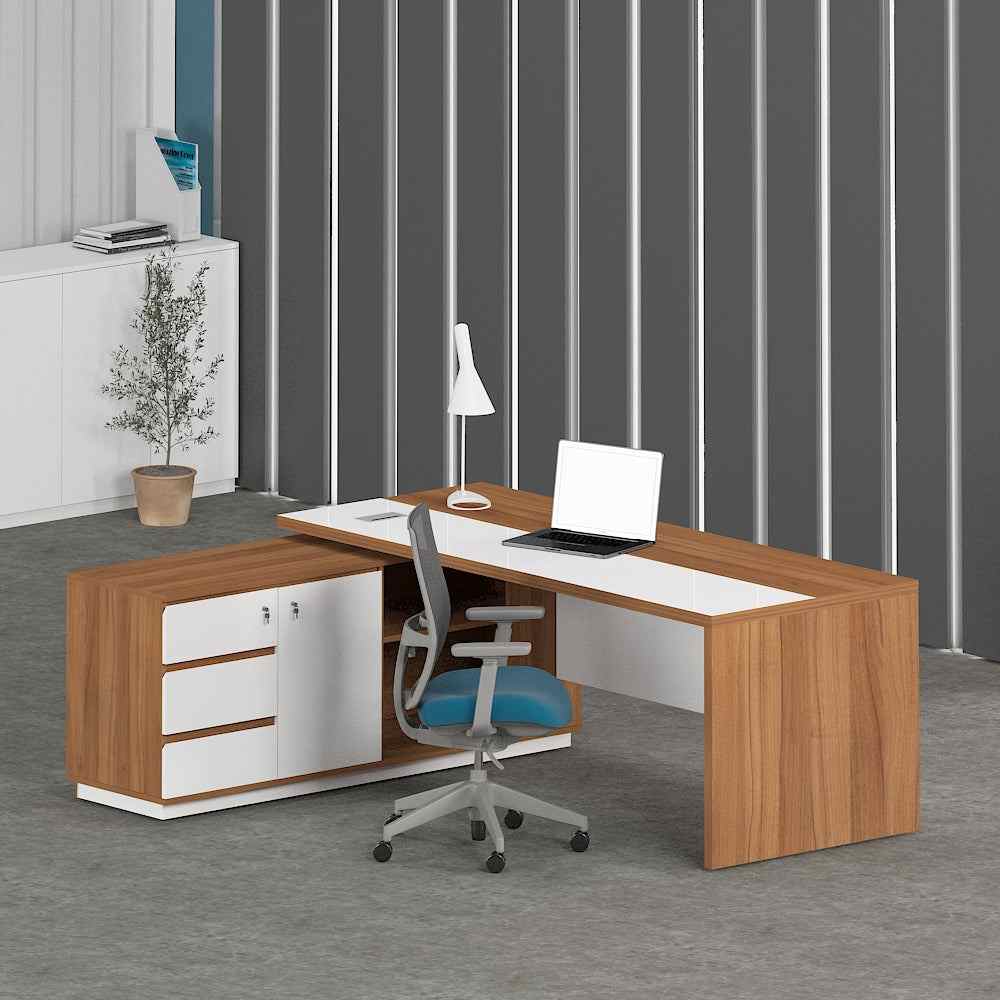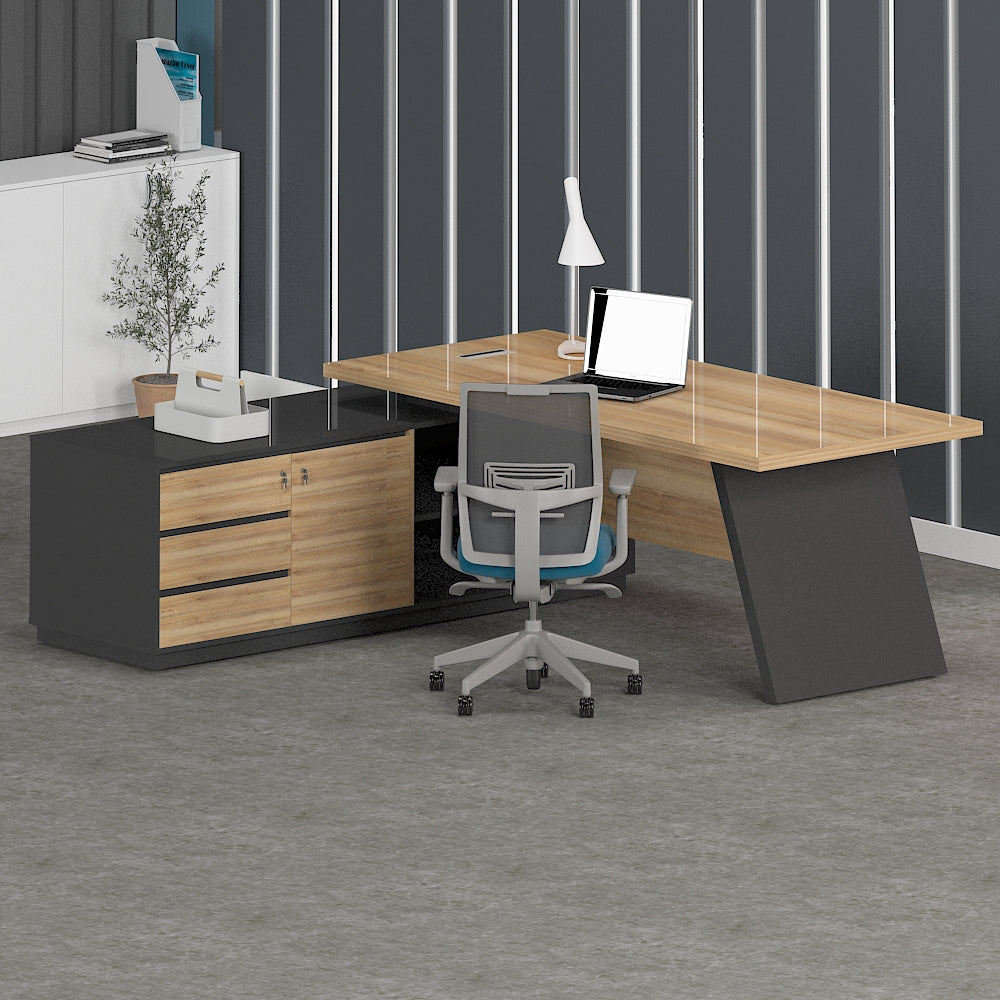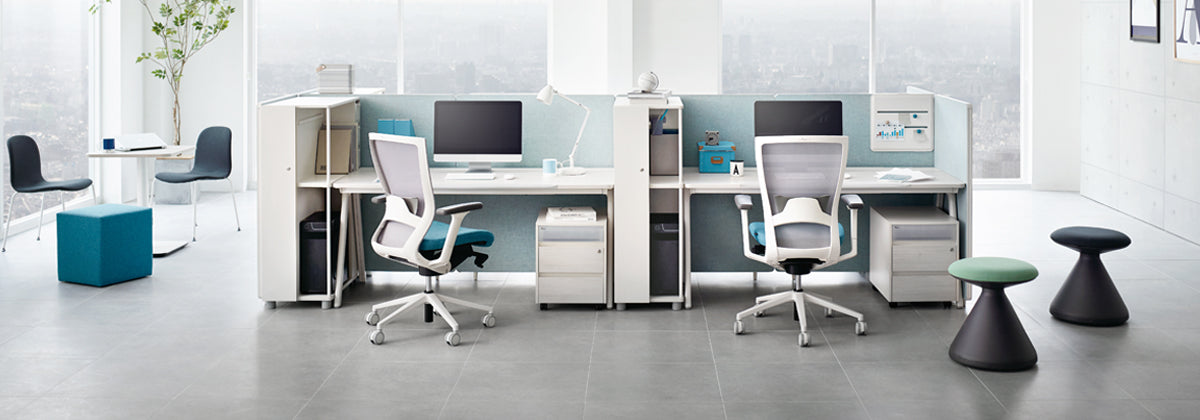In the realm of furnishing an administrative office, the choice of a table is essential. The executive table is not just a practical piece of furniture; it embodies professionalism and authority. Among the popular styles of executive tables available, L-shaped and rectangular designs stand out. Both offers unique benefits and can significantly influence the efficiency and aesthetics of the work environment.
Understanding the differences between these two styles can help you make an informed decision that meets your needs and complements your workspace design. From executive desk office like managerial office table design and size to cost and material options, exploring these factors will ensure you select the ideal table for your workspace. Regardless of whether you prefer a contemporary glass top or a rustic wooden design, this guide will examine the advantages of both corner and straight executive tables, helping you find the ideal centerpiece for your office.
Design Comparison
When selecting between L-shaped and linear executive tables, the aesthetic holds a crucial role in determining the functionality and aesthetic appeal of your office space . L-shaped tables are often favored for their spaciousness and versatility, offering more surface area for work and allowing for efficient collaboration. They can fit snugly into corners, maximizing floor space while offering a workspace that can accommodate various office tasks and activities.
Conversely, straight executive tables exude a classic and professional look that can enhance the formal ambiance of an office. Their linear design creates a clean, organized appearance, making them suitable for traditional office setups. Straight tables are ideal for compact spaces where a more compact design is needed, as they can streamline the office layout without sacrificing too much space.
Both designs come in various materials and finishes, with options such as wooden and glass tops available for each type. Office executive tables, regardless of shape, must be selected not only based on appearance but also on how they correspond with the office's overall aesthetic and functionality needs.

Price Considerations
When selecting a table for your office executive, cost is often a key factor that influences the decision-making process. The budget fluctuates widely depending on the design, materials, and manufacturer. Office executive tables can vary from affordable options, typically made of particleboard or synthetic materials, to luxury models constructed from hardwood or featuring opulent finishes. Famous brands like Godrej usually come at a cost, reflecting their standing for durability.
A further important aspect to consider is the cost difference between L-shaped tables and straight executive tables. L-shaped tables generally fetch a higher price due to their larger size and flexible design, which can accommodate more working area and storage options. However, straight executive tables may be less expensive and can be suitable in small office spaces, making them appealing to price-sensitive buyers.
Ultimately, when evaluating costs, it is essential to factor in additional costs such as office executive table accessories and matching chairs. Pairing executive desk office suite with an suitable chair set can enhance your workspace's overall look and functionality. It's wise to look for sets that provide the optimal value without sacrificing on quality, ensuring a smart investment for your office space.
Space Requirements

When deciding between L shaped and straight executive tables, grasping the spatial requirements is crucial. L-shaped tables generally require additional space as a result of their design, stretching across two boundaries of the room. This configuration is perfect for big offices where plenty of space free, enabling easy movement and extra office accessories. In contrast, conventional executive tables are preferably suited for smaller spaces, delivering a sleek form that optimizes functionality but not overwhelming the space.
It is critical to evaluate the office setting carefully ahead of choosing. Take into account the entire size of the area and the placement of other items such as office chairs and filing cabinets. An L-shaped table may provide greater workspace for work and organization, but it can alternatively block circulation if not positioned properly. On the contrarily, a conventional table can provide a more flow, but could fail to offer as much desktop area for paperwork and equipment.
In furthermore to the table type, think about the potential need for further items, like a side table or extra storage solutions. These elements should be included in the overall space planning to guarantee that the office stays efficient and tidy. Finally, selecting the appropriate executive table must align with both the office environment and your unique working style.

Style and Usability
When selecting an executive table, the balance between design and usability is critical. L-shaped managerial tables are often favored for their contemporary appearance and efficient use of area. They provide a more expansive work surface, making them ideal for multitasking and holding various office accessories. The design can improve the visual appeal of an workspace while promoting productivity, as the shape allows for better organization and ease of access of materials.
On the flip side, straight executive tables offer a more classic and timeless look, which can be advantageous in settings where formality and decorum are highlighted. These tables are adaptable and can integrate smoothly into both contemporary and traditional workspace designs. Their simple structure allows for convenient placement against walls or in spacious office layouts, offering sufficient workspace without overwhelming the room’s dimensions.

Ultimately, the decision between L-shaped and linear executive tables should consider the particular needs of the manager and the overall office design. While L-shaped tables might excel in team-oriented or versatile spaces, linear tables could more effectively serve environments where a refined professional appearance is valued. Assessing both design and functionality will ensure the chosen table meets both functional requirements and aesthetic preferences.
